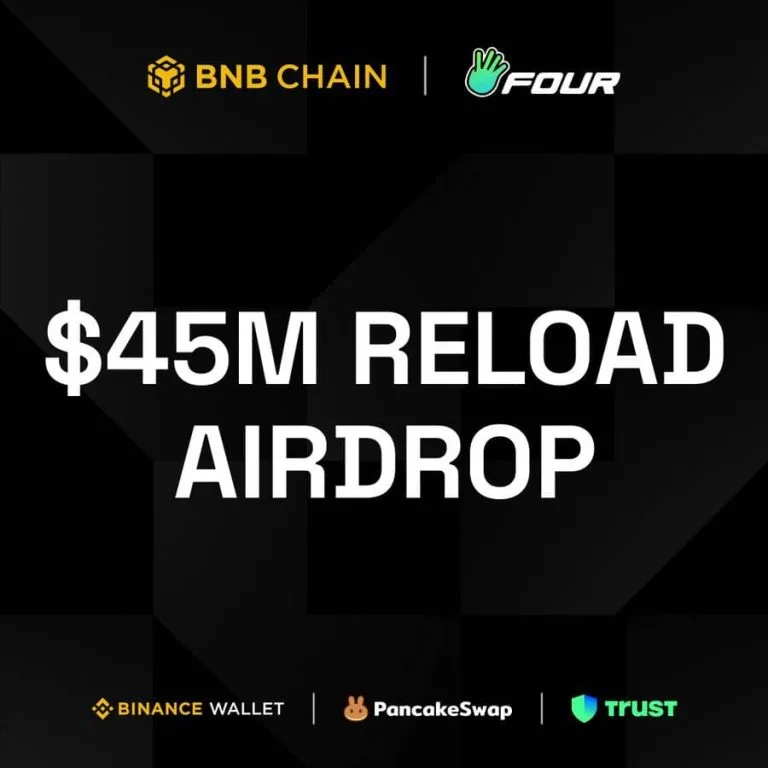Key Takeaways
- A significant crypto market flash crash on October 10 resulted in over $19 billion in liquidated leveraged positions.
- The crash was reportedly triggered by renewed U.S.–China trade tensions and increased tariffs, leading to sharp declines in Bitcoin and altcoins.
- Binance has launched a $400 million Together Initiative to support victims and the wider crypto ecosystem, including user compensation and institutional liquidity.
- As part of this initiative, the $45 million Reload Air drop on BNB Chain aims to reward memecoin traders.
- An investigation suggests a well-funded trader may have engineered the crash through massive asset rotations and a substantial Bitcoin short position.
Crypto Market Plunge and Binance’s Response
The cryptocurrency market experienced a substantial flash crash on October 10, leading to the liquidation of over $19 billion in leveraged positions within a matter of hours.
This significant market downturn appeared to be instigated by escalating U.S.–China trade tensions. Specifically, President Trump’s announcement of a 100% tariff on Chinese imports sent shockwaves through the market. Bitcoin’s price plummeted below $110,000, and many altcoins suffered even more severe losses, marking one of the most volatile liquidation events in recent history.
💡 It’s crucial for traders to understand how geopolitical events can directly impact cryptocurrency prices and leverage positions.
In swift response to the market turmoil, Binance announced the launch of the Together Initiative, a comprehensive recovery and confidence-building plan valued at $400 million. This extensive initiative is designed to provide crucial support to affected users and foster stability across the broader crypto ecosystem.
✅ Understanding Binance’s proactive measures can offer insights into how large exchanges manage market crises.
Binance’s Support Initiative Details
According to an official announcement from Binance, the Together Initiative is structured around three core components: direct user compensation programs, on-chain recovery measures, and vital institutional liquidity support.
📊 This multi-faceted approach highlights the importance of a coordinated response in stabilizing a recovering market.
Furthermore, as a component of this wider recovery effort, BNB Chain, in collaboration with Four Meme, PancakeSwap, Binance Wallet, and Trust Wallet, has introduced the $45 million Reload Airdrop in BNB. This airdrop specifically targets and rewards memecoin traders operating across the BNB Chain network.
⚡ Airdrops are a common strategy to incentivize and reward specific user groups within a blockchain ecosystem.
The Reload Airdrop is being distributed in four separate installments. Batch 1 has already been successfully completed, with the subsequent rounds scheduled for early November 2025. It is important to note that this is not an open campaign; eligibility criteria were set prior to the market crash, and qualifying wallets are receiving tokens automatically.
📌 It’s essential to always check the official eligibility criteria for any airdrop to avoid misinformation.
This airdrop operates in conjunction with Binance’s other recovery efforts, including a $300 million USDC user compensation program and a $100 million fund dedicated to supporting institutions. Collectively, these measures bring the total recovery package to an impressive $728 million, demonstrating a significant and coordinated effort from one of the industry’s leading cryptocurrency exchanges.
💡 The substantial financial commitment from Binance underscores the exchange’s dedication to user protection and market stability.
Investigation into the Crash’s Origin
While Binance focuses on market recovery, attention has also turned to identifying the root causes of the October 10 flash crash. On October 12, a detailed investigation by @eyeonchains, which was subsequently retweeted by @CZ_Binance, suggested that a large trader (a whale) on the Hyperliquid platform, possibly operating through Hyperunit, may have orchestrated the market meltdown. This was reportedly achieved through massive rotations between Bitcoin and Ethereum, coupled with a substantial Bitcoin short position valued at $735 million.
✅ Understanding the mechanics of potential market manipulation is vital for every trader.
The investigation linked several Bitcoin and Ethereum wallets, including staking contracts, to Garrett Jin, the former CEO of BitForex. Jin had previously faced accusations of falsifying trading volumes and freezing customer withdrawals on the BitForex platform.
📊 This highlights the importance of due diligence when choosing cryptocurrency exchanges and platforms.
According to the findings presented in the investigation thread, the same individual allegedly sold 35,000 BTC in exchange for ETH, staked approximately 570,000 ETH, and initiated a significant short position on Bitcoin just prior to the sudden market decline on October 10.
💡 Following the activity of large market players can sometimes offer insights, but it’s not without risk.
Initially, @CZ_Binance commented on the report, stating, Not sure of validity. Hope someone can cross-check.
When asked by @HaileyLennonBTC why Binance, as an exchange, did not internally verify such a claim, @CZ_Binance responded:
I would never ask Binance to violate user privacy. I don’t ask myself. Best if third-party investigators use public blockchain data for this research, which they seem to be pretty good at.
📍 This response emphasizes the commitment to user privacy and the reliance on external, independent research using publicly available blockchain data.
This final remark was widely interpreted as a subtle endorsement of the investigation’s credibility. It suggested that the October 10 crash might not have been a purely organic market event, but potentially an orchestrated manipulation rather than a natural cascade of liquidations.
💡 Independent blockchain analysis plays a crucial role in unraveling complex market events and ensuring transparency.
Industry Response and Market Dynamics
The recent crypto market flash crash and subsequent recovery efforts by major players like Binance underscore the inherent volatility and interconnectedness of the digital asset space. While institutional responses aim to restore confidence, investigations into potential market manipulation highlight the ongoing need for robust security and transparent market practices to protect all participants.

